Our Blog - Barcelona Day 2 - February 2018
I call this Day 2 of Barcelona, but the majority of the day was spent outside of Barcelona, in Montserrat. Montserrat itself is the name of a mountain range outside of Barcelona but most tourists speak of Montserrat as the small town and the Benedictine abbey that sits at the top. Montserrat literally means "saw mountain", describing the way the rock formations look from far away. You take a train from Barcelona to one of several stops and from there, you get to the Abbey by either cable car or the cremarella train. We picked the train (and I think the cable car was even closed that day). It was really a terrible weather-day ... lots of fog and rain ... so the pictures are not the best (sorry).
The cremarella train was originally opened in 1892 and did fairly well until it got some competition from the cable car in 1930. It closed in 1957 after poor financial results as well as an accident in 1953. It then reopened in 2003 after Montserrat became too popular and the cable car and narrow road couldn't handle the increasing number of visitors. We took several pictures on the way up, although mostly of the town below since we ended up on the wrong side of the train. We did get a couple of the peaks when we got to the Abbey. We also found out that the funicular that goes up to the top was closed the month of February for maintenance.




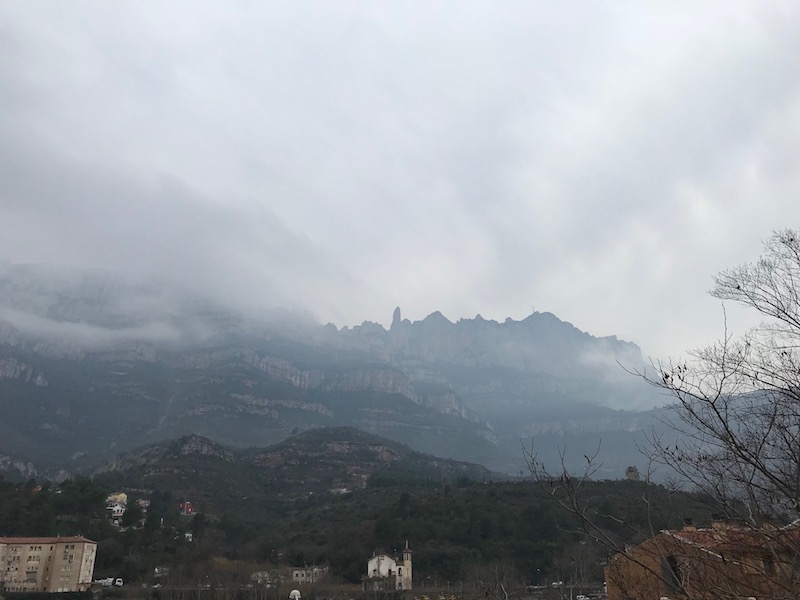
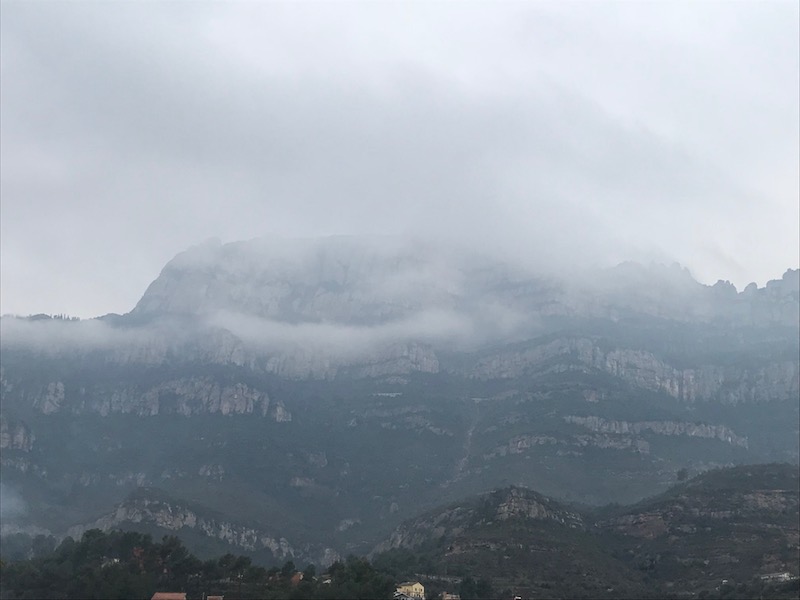


Here you can see rock cliffs that surround the Abbey and other buildings at the top.
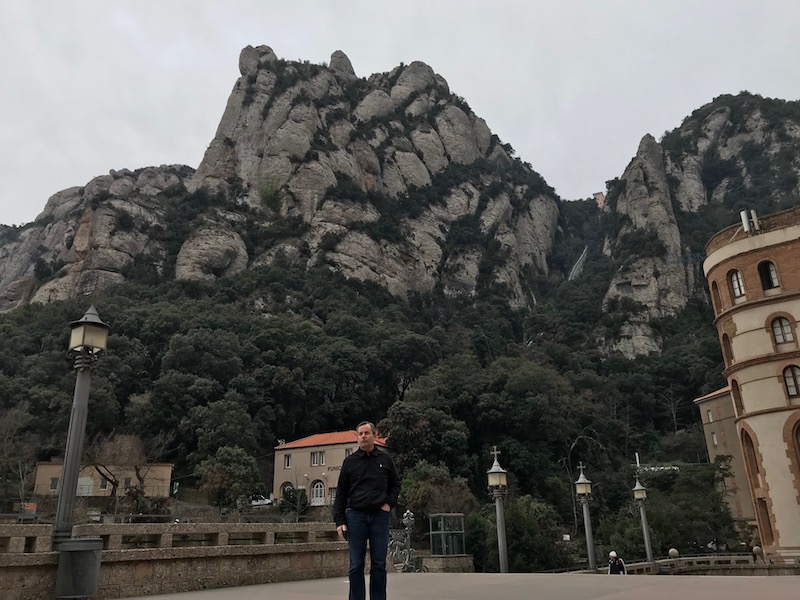
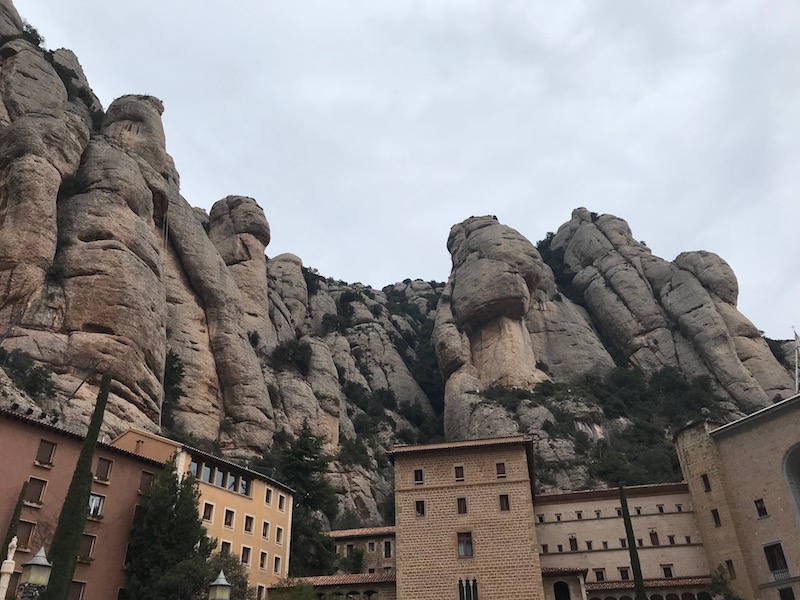
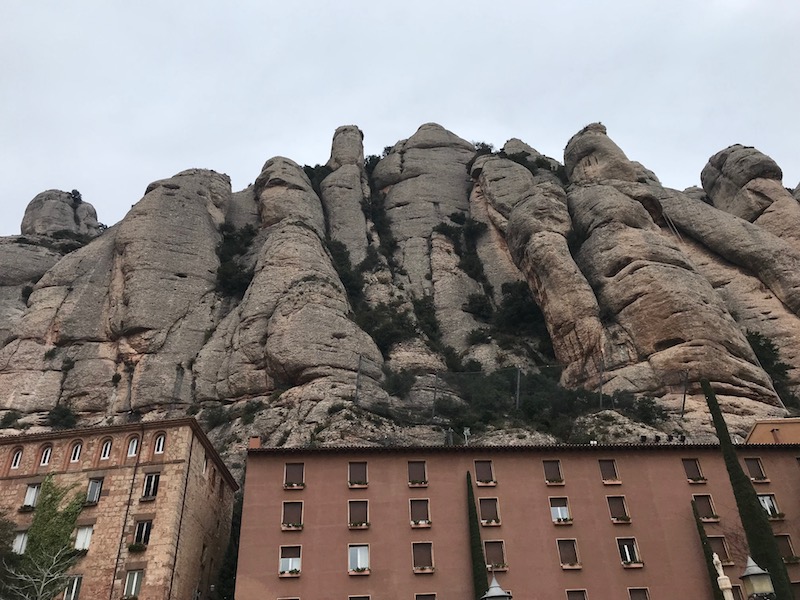


We did a bit of a walk around what little bit is actually there, and we ended up going by this bronze statue with a little waterfall. This is a sculpture of Abat Oliba, the founder of Montserrat Monastery. The Abbot is considered one of the spiritual founders of Catalonia in addition to founding the monastery here.

Now let's get to the main attraction of Montserrat ... the Abbey. The monastery was founded in the 10th century and is still active with over 70 monks living and working there. Unfortunately, they were doing work when we visited and the main atrium of the Abbey was blocked off. But we attempted to get a few pictures, showing the statues up over a doorway, then a glass circle, and then a clock up at the top. The current facade was created in 1901 and the statues above the door are sculptures of Christ and the twelve apostles.



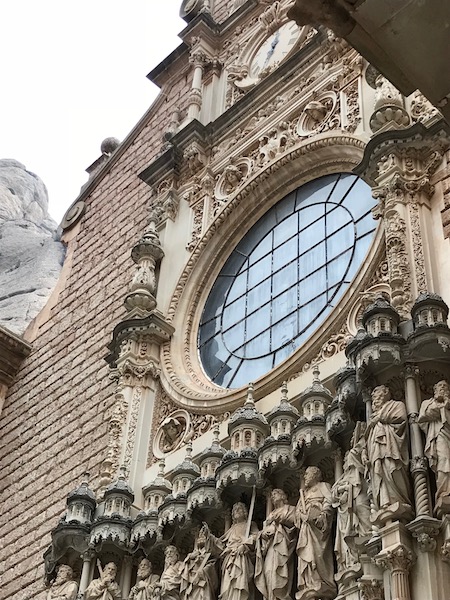

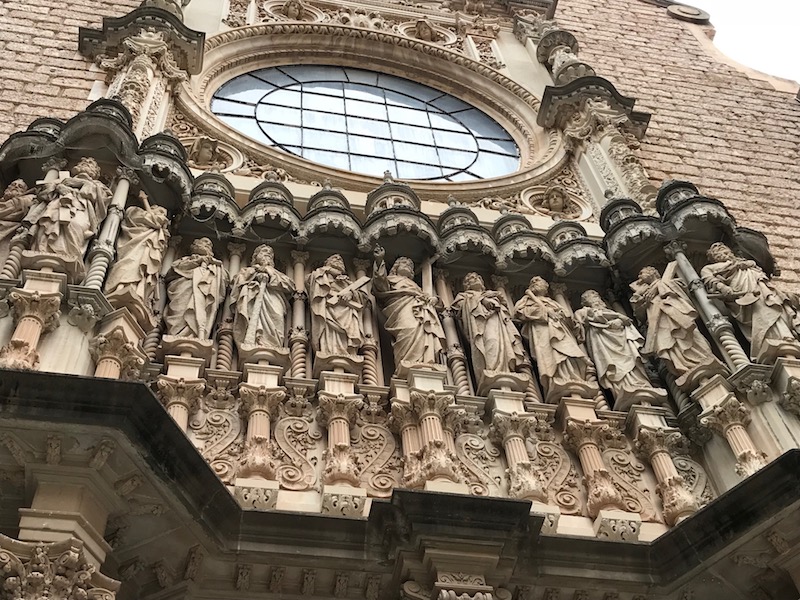
Around the atrium were these nice paintings, showing important figures from the history of Montserrat and Catalunya.
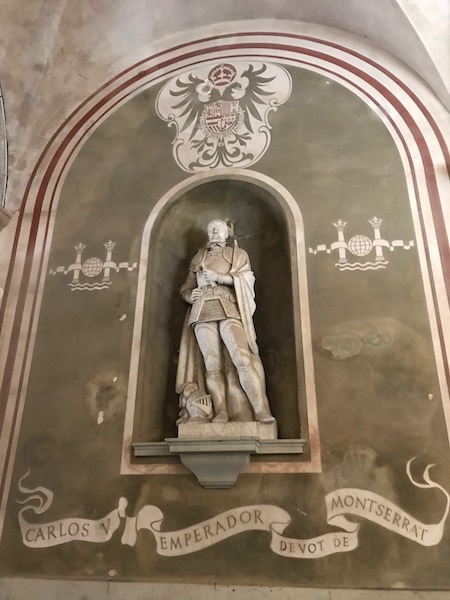


On one side, you can walk through an area where you can buy and light candles.
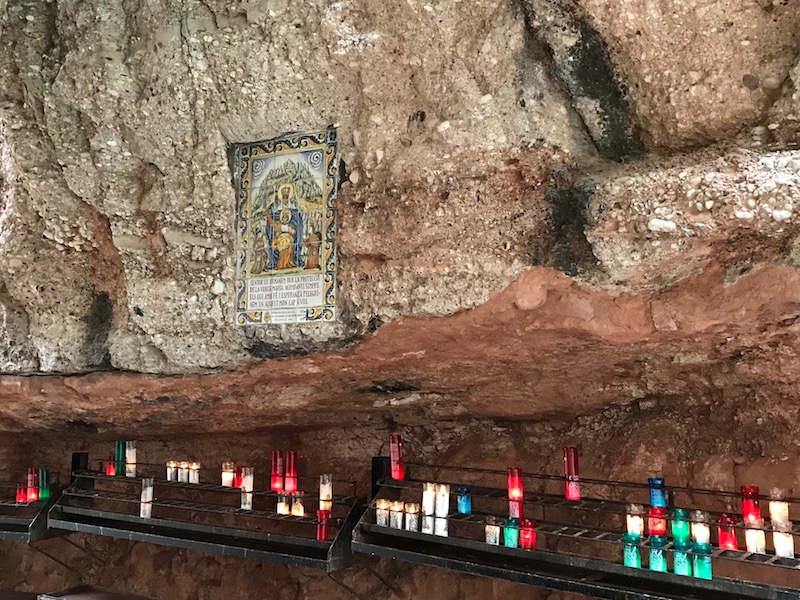
This is the baptistry, and then another nice carving with Tom in front.
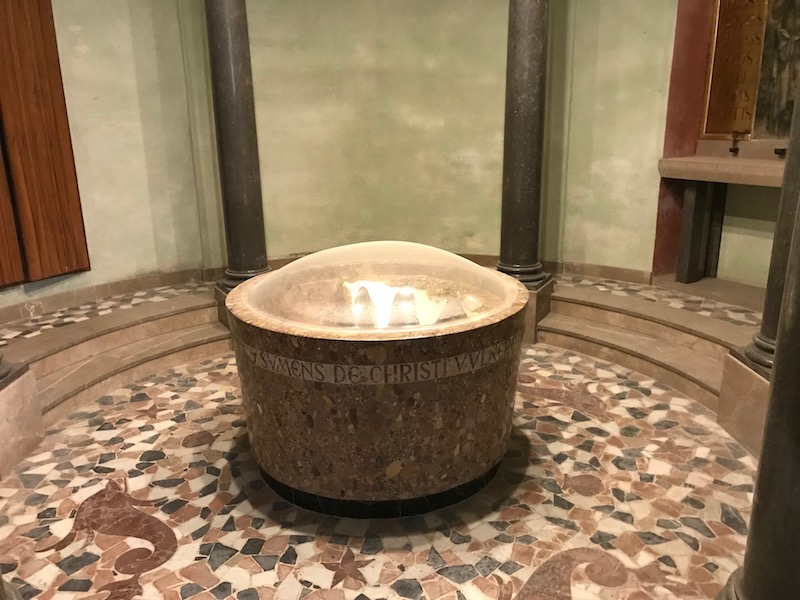
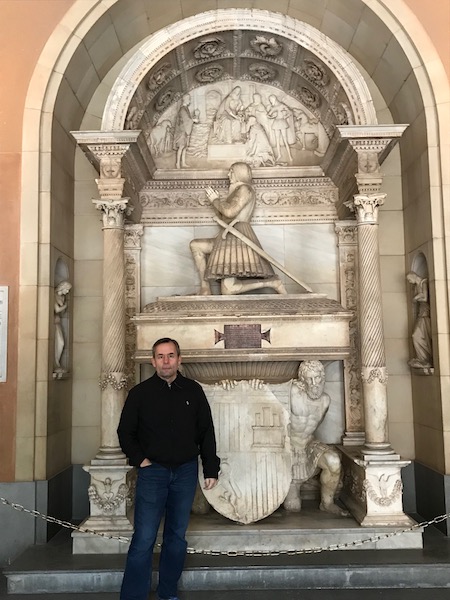
Next door is the 15th century Gothic Cloistre. There was a tiny little reading room there that we could go into which was packed with different books.
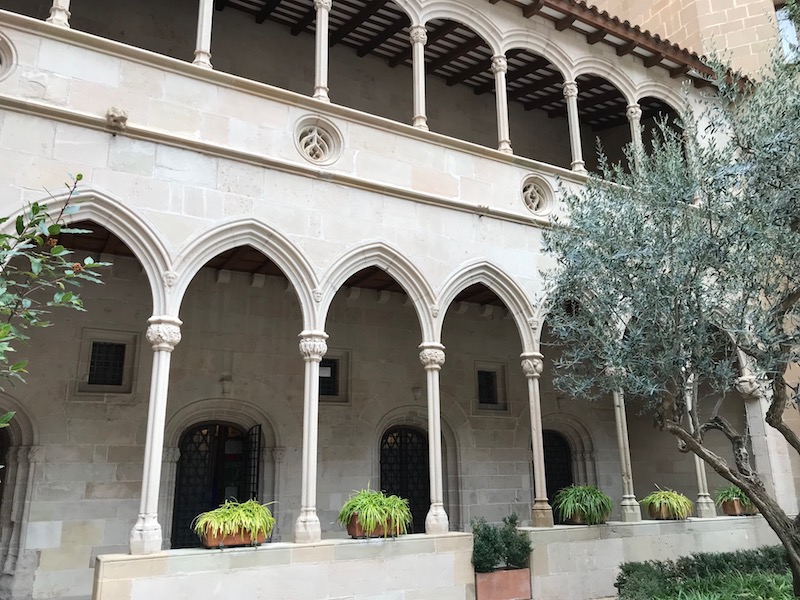
The interior of the Basilica Santa Maria de Montserrat Abbey is dark and solemn, but is nicely decorated and has a set of interesting hanging lamps. The lamps seemed to all be different in style and had a city name on it (not sure if the lamp was donated to the church, or what). It didn't seem to have the typical design with a transept, but lovely Romanesque arches and multiple side chapels. It didn't have all that much stained glass, just a round stained glass window at the back over the entrance (although not a Rose window) and a few in the side chapels.


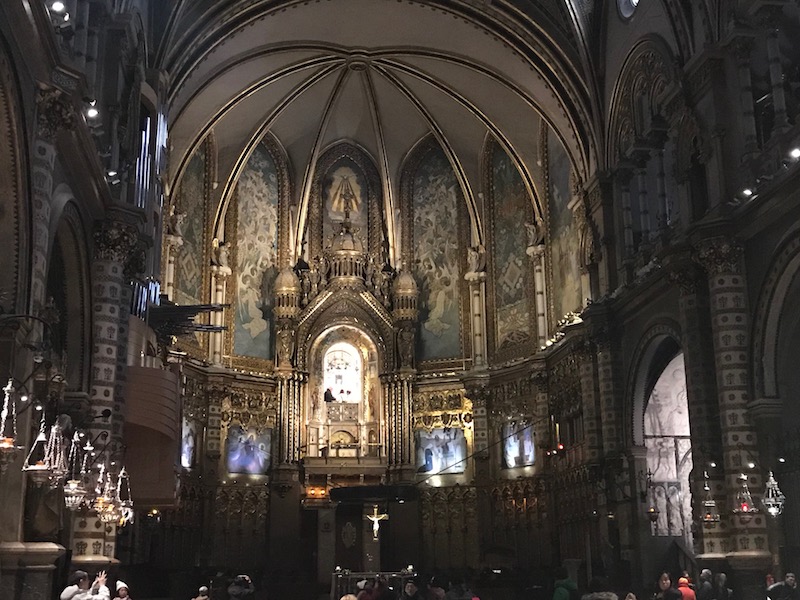

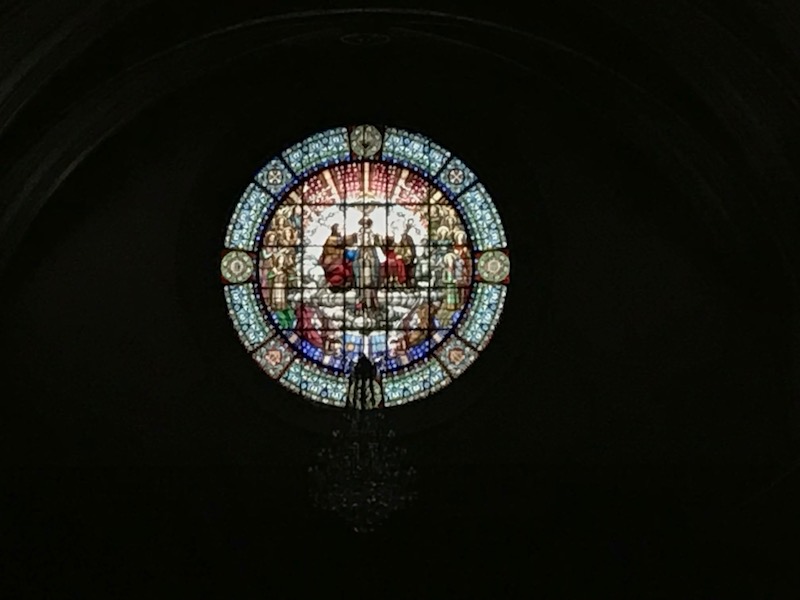
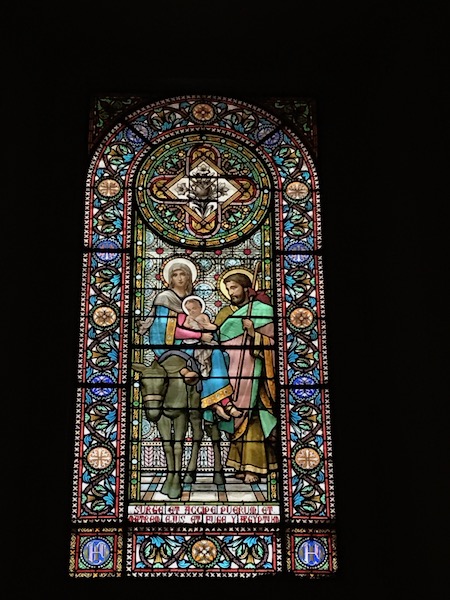
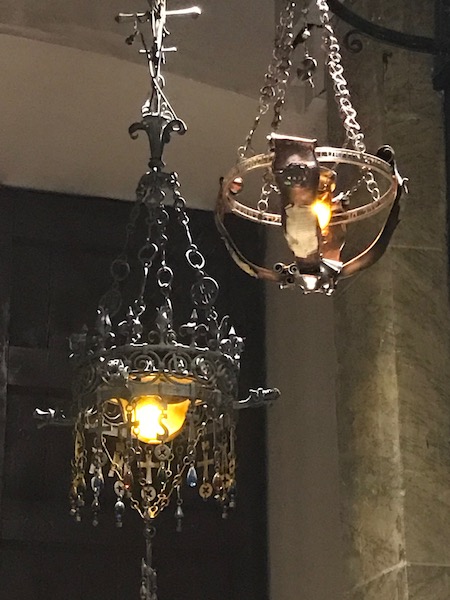

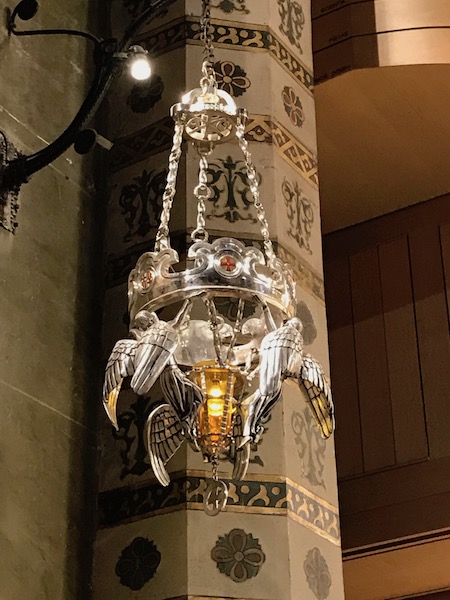
Around the alter were various paintings although with the low light level, it was really hard to get a good look at them.

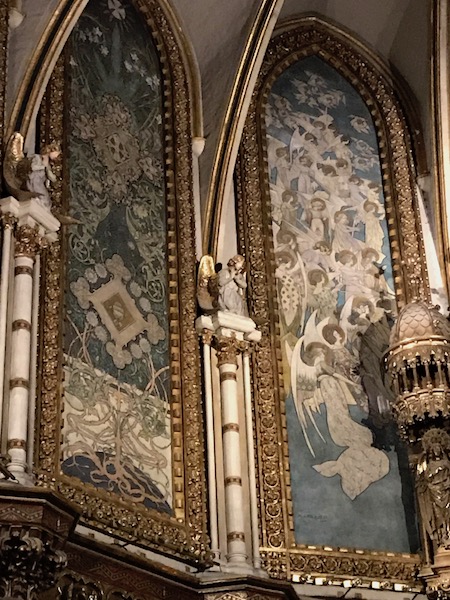
The Altarpiece seemed to be a bit out of place in the church, as it seemed heavy and silver, with colored panels.
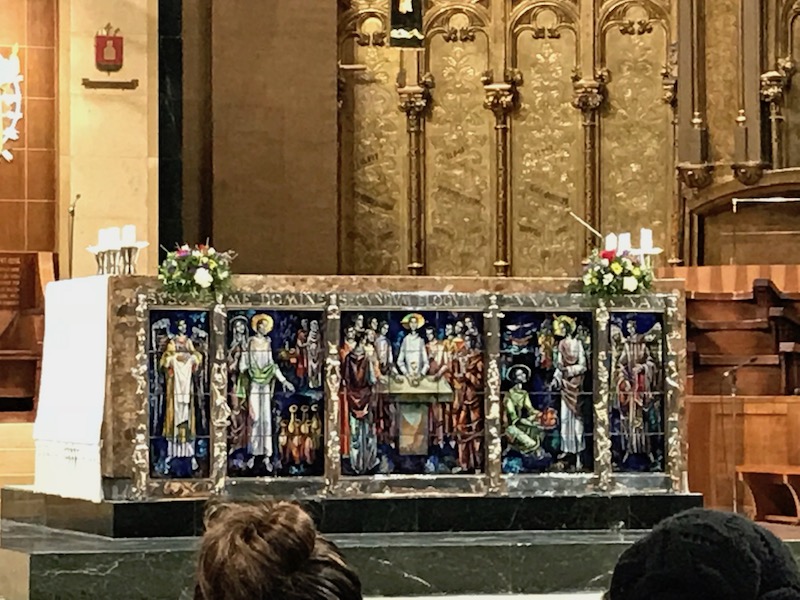
The main site at the abbey is actually the statue of the Black Madonna, supposedly from the 12th century. Pope Leo XIII proclaimed Our Lady of Montserrat Patron Saint of Catalonia in 1881. There is a separate line for going to see the Madonna and they limit the number of people as the space is very small. When you start, you go up a wide marble staircase and carved alabaster doorway by Enric Monjo, flanked by two alabaster candelabra by Rafael Solanich.

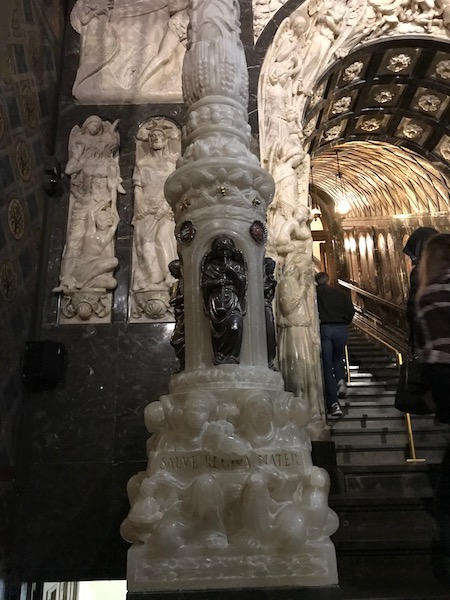

As you go up the stairway, the interior of the stairway is decorated with beautifully-made mosaics designed by Fr. Benet Martínez, one of the monks of Montserrat.

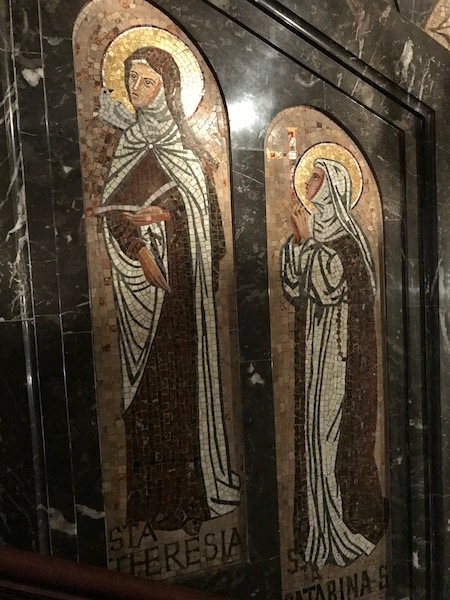
The dome and walls of the throne room are decorated with golden mosaics designed by Obiols, which show Our Lady of Montserrat being proclaimed patron saint of Catalonia. The ceiling depicts the four archangels.


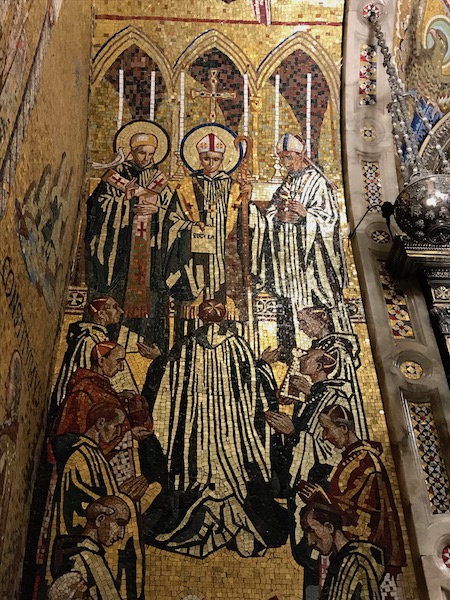
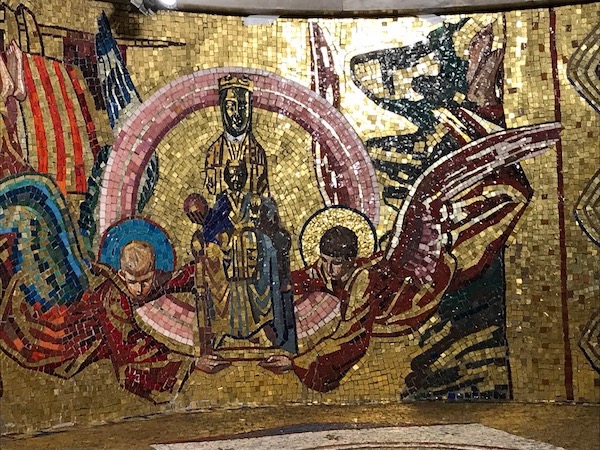
The statue of Our Lady of Monserrat is a fairly small Romanesque, polychrome statue, measuring 38 inches in height. Mary is seated with the Christ Child on her lap. In her right hand, she holds a sphere which symbolizes the universe. The Christ Child holds a pineapple in one hand, which is the symbol of eternal life, and offers a blessing with his other hand. One by one, you go through the small niche where the Madonna is, and you are allowed to rub the sphere/universe and make a wish (and of course, take your picture!)
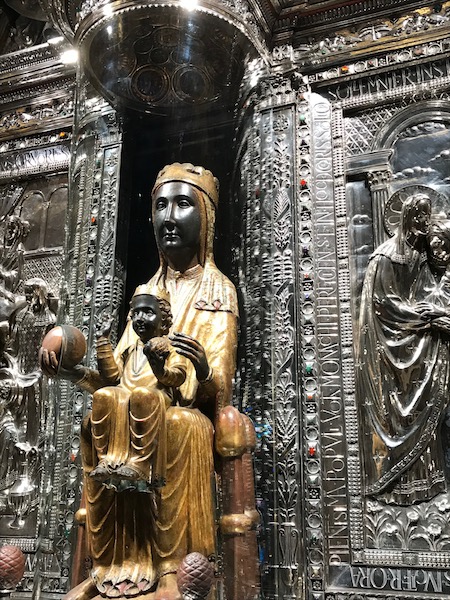
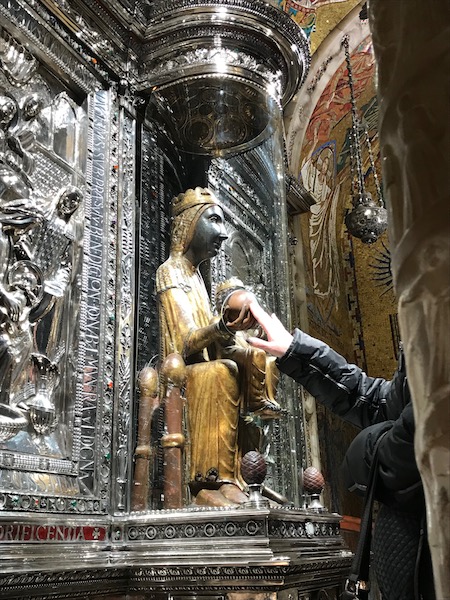

We also stayed to hear the boys choir (a short 10-minute singing) and right before they came in, they turned up the lights, so here are a couple better pictures of the alter area and the niche holding the Madonna.

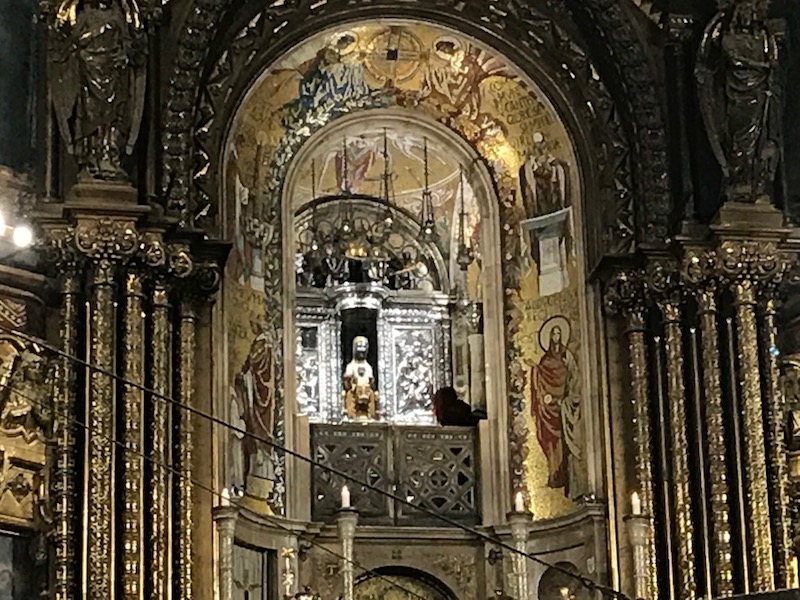
Montserrat is also famous for the boy's choir, called L'Escolania, that was established in 1223. They specialize in a type of singing known as Gregorian chanting. Interestingly enough, they have Gregorian Chants here in Toulouse and we were planning on going to one but never quite made it. I was expecting more "chanting" but it really was more "singing" to me. I thought it was funny as they came in, their arms were inside so they all looked "armless" but then their arms came out when they were singing and holding a paper with the lyrics.
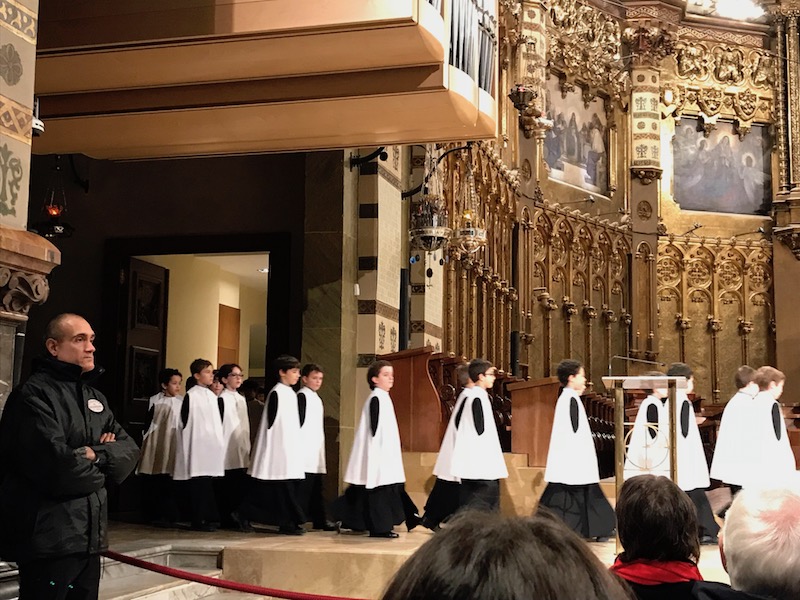

Next door to the Abbey is the Museum of Montserrat, which houses several different collections, from 13th century BC Egyptian artifacts to paintings as new as 2010. I selected a subset that I found interesting. First up, an Altarpiece of a holy knight from the end of the 15th century.

A Picasso entitled Old Fisherman, but this one was done in 1895 when Picasso was only 14 years old. Really? At 14, he could paint THIS GOOD?
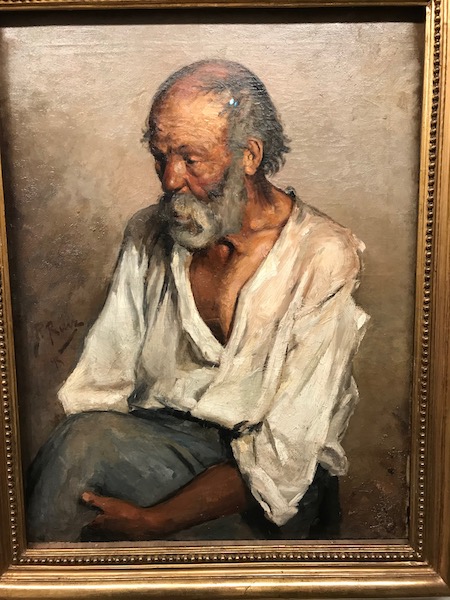
From 1892, a painting entitled Regiment on the march by Josep Cusachs. This one caught me for how photo-like it was, even though it was done in the late 1800's. I even got a close-up to try to give you an idea of just how amazingly good this was.
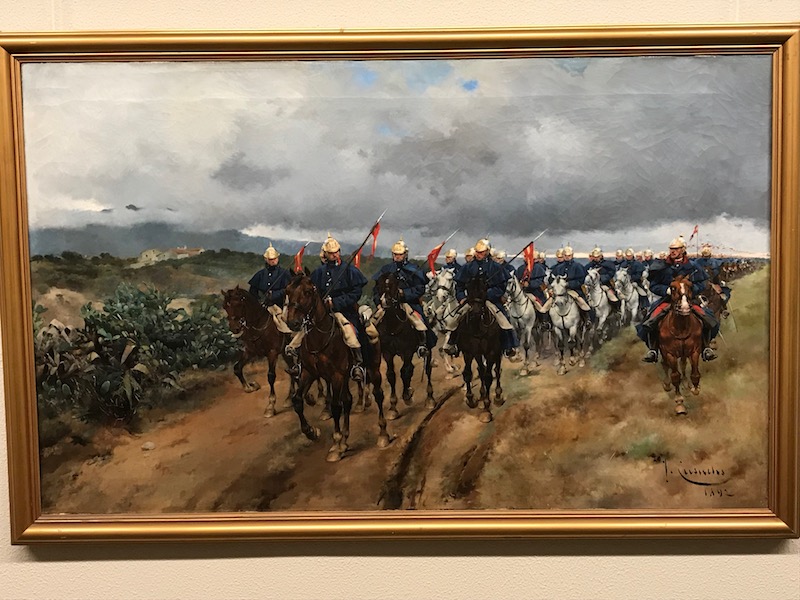

From 1915, a painting of the Madonna from the abbey with the boys choir. I thought this was interesting as we had just seen the Madonna and heard the boys choir.

These come from Mesopotamia, and are small tablets inscribed with Cuneiform script, one of the earliest systems of writing that was invented by the Sumerians.
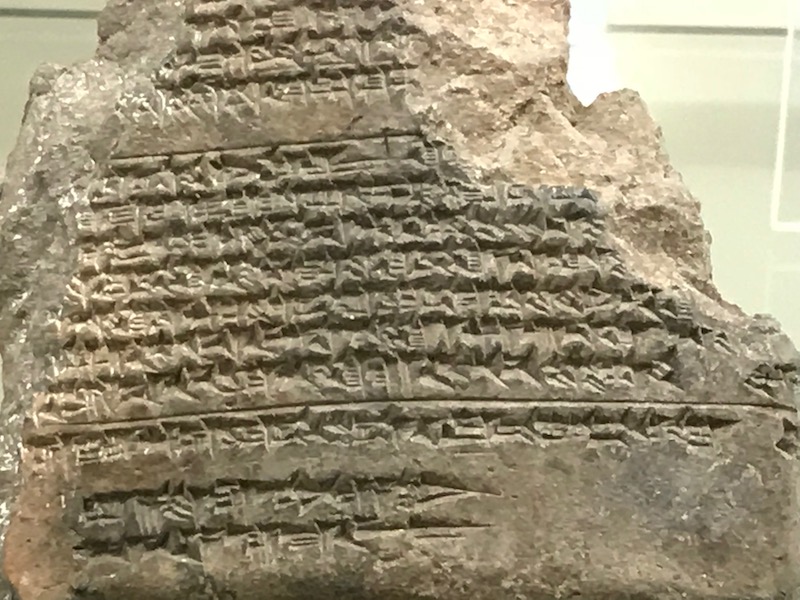

And lastly, a Russian icon from the 18th century. According to Christian tradition, the Image of Edessa was a holy relic consisting of a square or rectangle of cloth upon which a miraculous image of the face of Jesus had been imprinted (the first icon). In the Orthodox Churches, including English-speaking Orthodoxy, the image is generally known as the Mandylion.
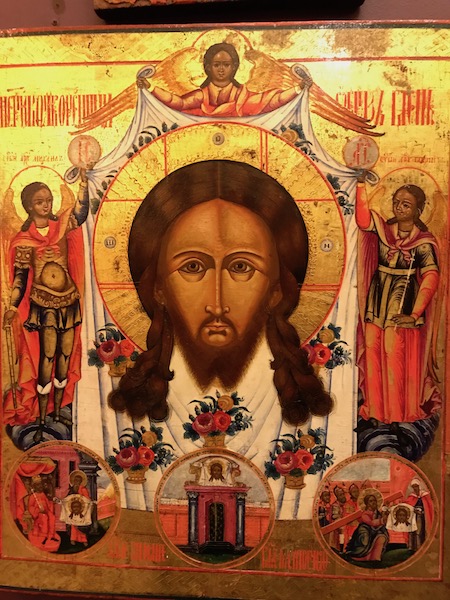
We headed back down the same way we came up ... on the train. We positioned ourselves on the correct side of the train this time, although the weather was not cooperating with us and so what we got were some really good pictures of the fog. It was interesting that we could basically see the clouds below us!






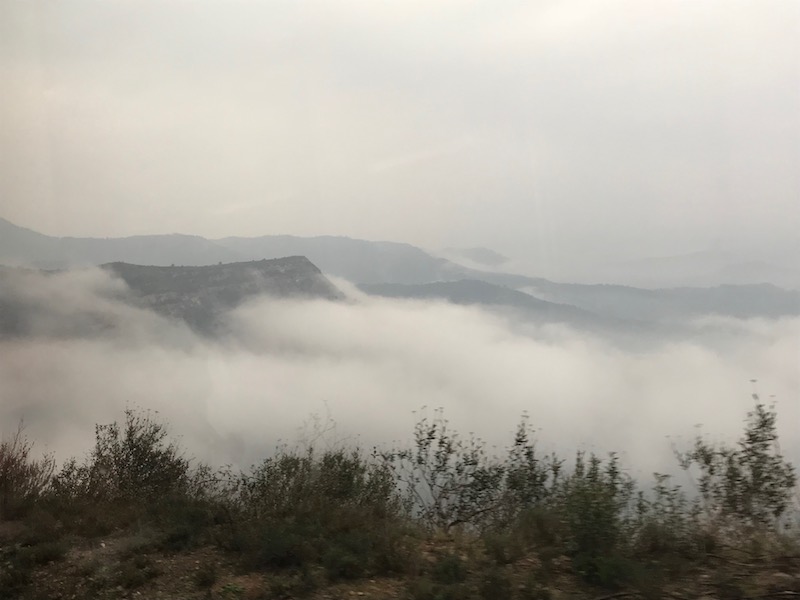
At Plaça d'Espanya, we grabbed a peek at the Venetian Towers, which were modeled on the campanile of St. Mark's Basilica in Venice. They are made of 3 different things: artificial stone at the bottom, then red brick, then a viewing gallery (also made of artificial stone), topped by a pyramidal copper roof. They were built as part of the redevelopment of that area of Barcelona for the 1929 Barcelona International Expo. The fountain/monument at the centre of the square was designed by Josep Maria Jujol, a collaborator of Antoni Gaudí, while Miquel Blay designed the main sculptures, which represent the three seas surrounding the Iberian Peninsula and the main rivers that run through it: the Ebro, the Tagus and the Guadalquivir. The figures on the corners depict abundance, health and navigation. The cauldron surmounting the ensemble was designed by Frederic Llobet, containing a flame which completes the work. An interesting (although morbid) bit of trivia: the square was built on a site that had been previously used for public hangings until 1715 when the Ciutadella fortress was built.


Dinner tonight was another Tapas place, called La Vinateria del Call (El Call is the old Jewish neighborhood). It had two different sides, divided by an old brick wall.
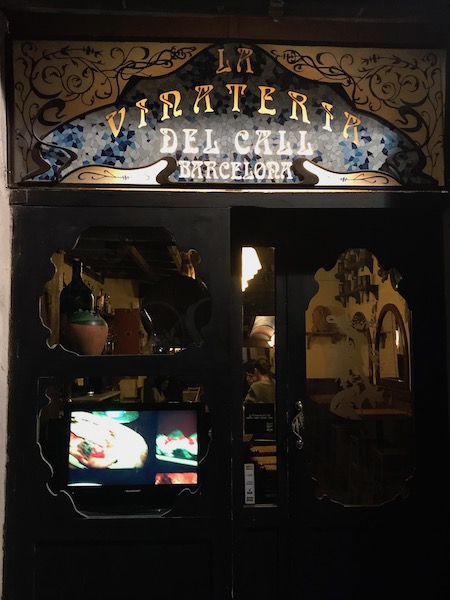
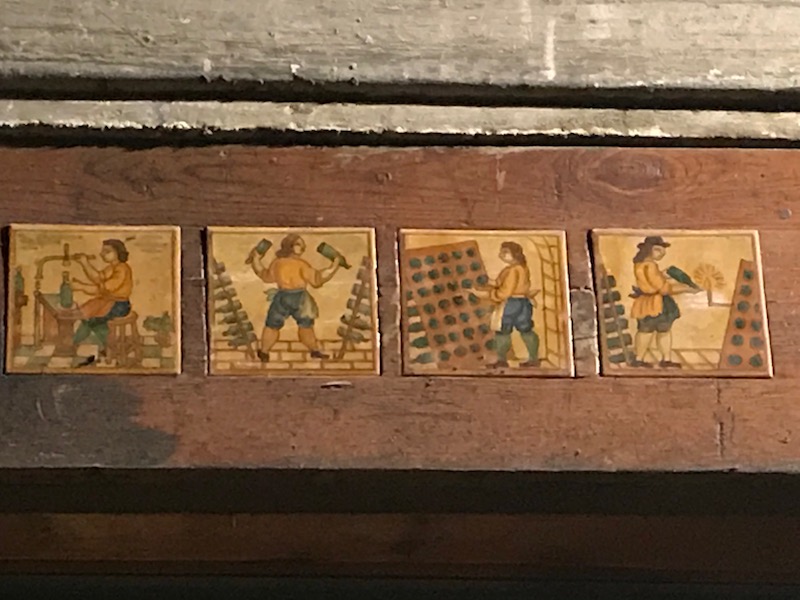
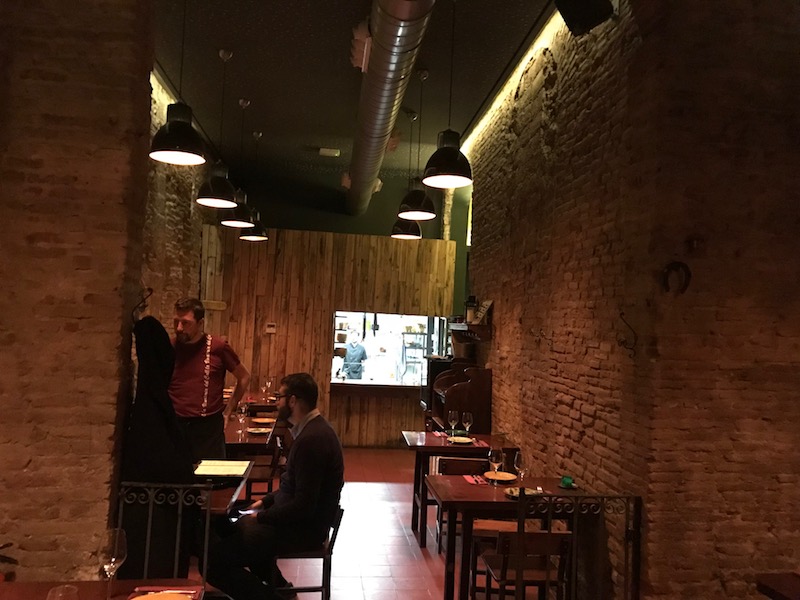

We started off with a Catalonian wine, which we were trying to get through our time in Barcelona. This one was from "Terra Alta", which is the Denominación de Origen (DO) of wines (like AOP/AOC in France) for wines from the western part of Catalonia. Terra Alta means "High Land", which is perfect for this mountainous area (which is featured in a number of Picasso paintings).
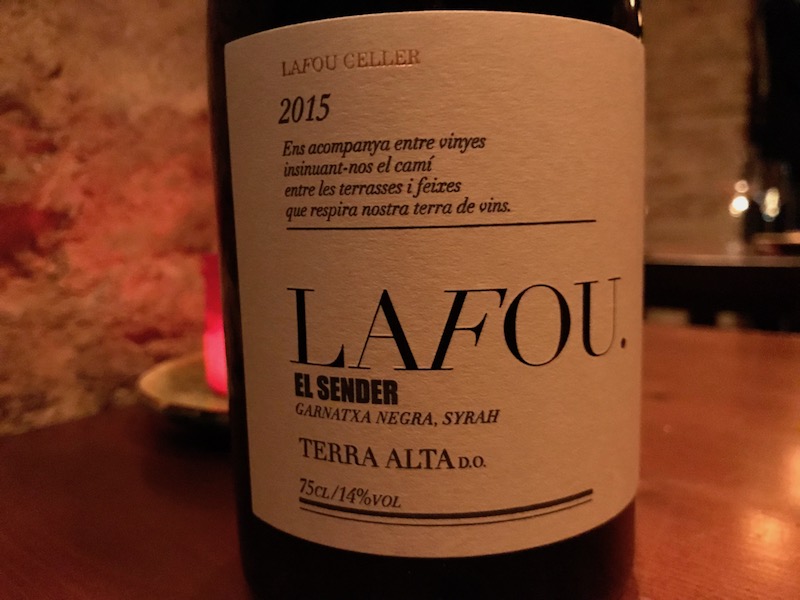
For the tapas, we tried a variety. A traditional Catalan dish of Roasted red pepper, aubergine, and onion, and Meatballs of veal with mushrooms.

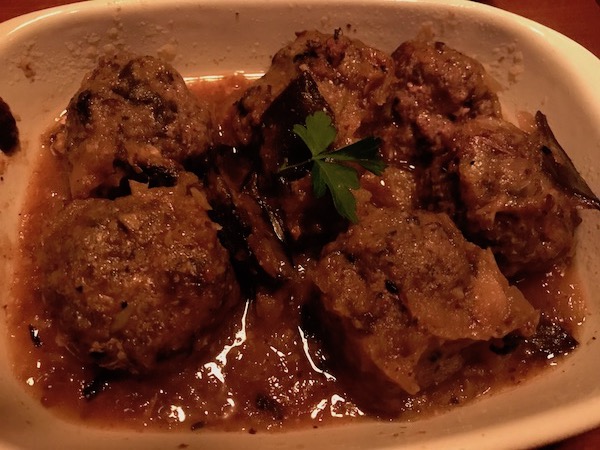
We did one sausage, which was called "Fuet" from Vic (which is an area equidistant from the Pyrenees and Barcelona). Fuet is a thin, dry cured pork sausage, flavored with black pepper, garlic, and sometimes Anise. The most famous Fuet is made (go figure) in Vic.
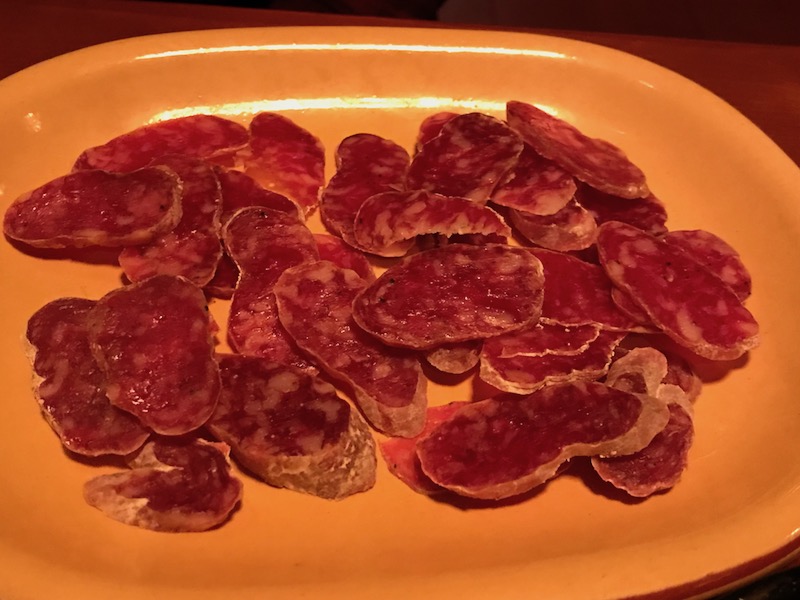
This one is Fried green peppers from Padron. An interesting note about the peppers ... they are a bit peculiar because while general, they are mild, a minority (10-25%) are very hot. Whether a given pepper ends up being hot or mild depends on the amount of water and sunlight it receives during its growth, in addition to temperature. It is said that solely watering the soil of the plant is likely to produce milder pimentos, whilst watering the whole plant, leaves and stalks included, produces peppers of the spicier variety
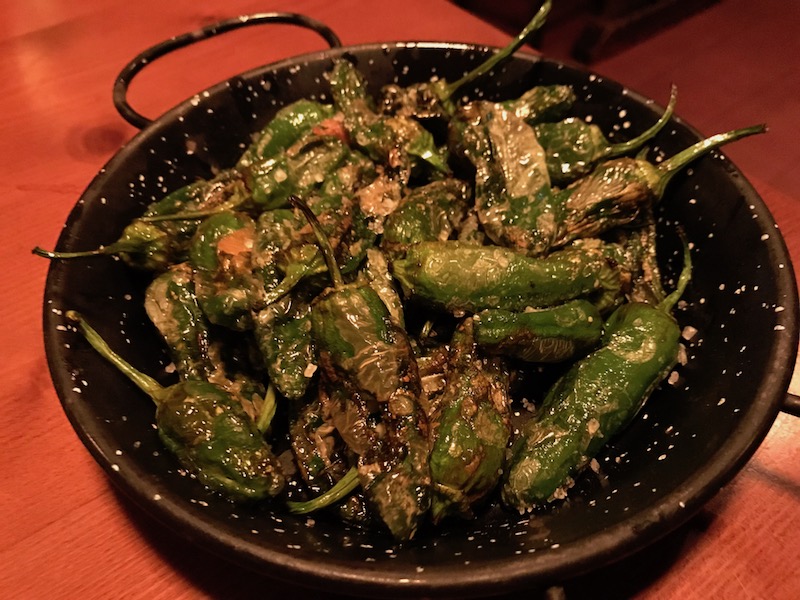
So this one is the "Tomato Bread" which is a very typical tapas (I think we had this every night we ate tapas). The restaurant has a video which actually shows them making this, which takes toasted bread and rubs it with tomatoes and then drizzles it with olive oil.

Continue to Day 3.